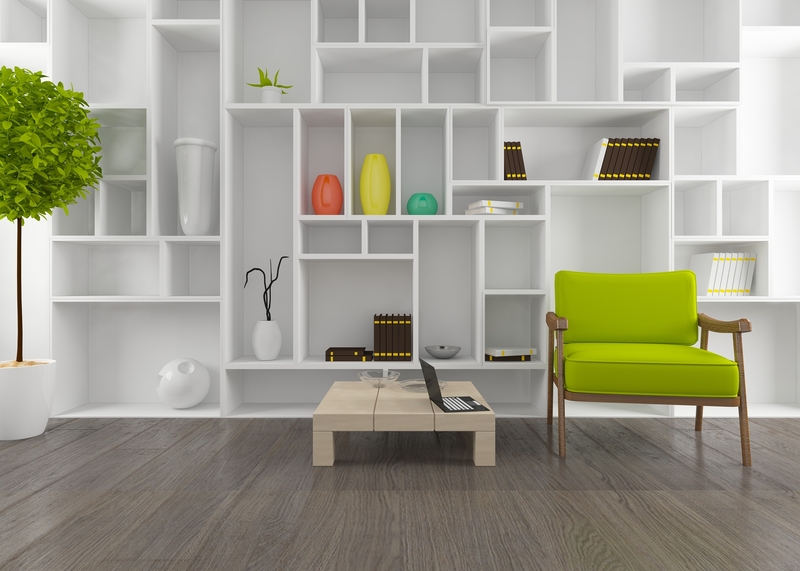Space Efficiency: Downsizing for a Fuller Life
Posted on 14/12/2024
In a world that constantly celebrates more--more possessions, more space, more everything--there is a burgeoning counter-movement that seeks fulfillment through less. Downsizing has emerged as not merely a trend, but a paradigm shift for those yearning to reclaim their lives from the clutches of clutter and excess. The concept of space efficiency focuses on making the most out of the physical space we inhabit by prioritizing functionality, simplicity, and purpose.
Understanding Space Efficiency
Space efficiency is the practice of utilizing space in a way that maximizes its functionality while minimizing waste. This involves meticulous planning, thoughtful design, and an intentional approach to owning possessions. By making conscious choices about what fills our living spaces, we create environments that better serve our needs and aspirations.

The Psychological Benefits of Downsizing
One of the most compelling reasons to embrace space efficiency is the positive impact it can have on mental well-being. A cluttered living space often leads to a cluttered mind, contributing to stress and anxiety. Conversely, a well-organized, efficient space can foster a sense of calm and order. The principles of minimalism and space efficiency inherently support mental clarity and emotional balance by reducing the chaos of physical clutter.
The Economics of Downsizing
Another significant advantage of downsizing is the potential for financial savings. Smaller living spaces generally cost less to rent or buy, and they come with lower utility bills and maintenance costs. By choosing to live in a smaller, more efficient space, individuals can allocate financial resources to experiences, investments, or savings that add greater value to their lives.
Reduced Utility Costs
One area where downsizing truly pays off is in the reduction of utility costs. A smaller home requires less energy to heat, cool, and light, leading to substantial savings over time. These cost savings contribute to a reduced carbon footprint, making downsizing not just an economic choice, but an environmental one as well.
Lower Maintenance Expenses
Maintaining a smaller space is invariably less costly and time-consuming. There are fewer repairs, less upkeep, and fewer renovations needed to keep the space in good condition. This leaves more time and money for other activities and pursuits, enhancing the overall quality of life.
Environmental Impact
Living in a space-efficient manner aligns well with sustainable living. Smaller homes require fewer building materials, which reduces the environmental impact of construction. Furthermore, efficient use of space often translates into sustainable behavior patterns, such as reduced energy consumption and waste production. Downsizing can lead to a more sustainable lifestyle that benefits not only the individual but also the planet.
Maximizing Space Efficiency
Achieving space efficiency involves more than just getting rid of excess belongings; it requires a systematic approach to organizing and designing living spaces. Here are some strategies to help maximize space efficiency:
Smart Furniture Choices
Incorporating multi-functional furniture is key to maximizing space. Items like sofa beds, fold-out desks, and storage ottomans serve dual purposes, decreasing the need for multiple pieces of furniture and freeing up valuable floor space. Built-in furniture solutions, like wall-mounted desks or bookshelves, also contribute to a clutter-free environment.
Vertical Storage Solutions
When floor space is limited, vertical storage becomes essential. Utilizing wall space for shelves, hooks, and cabinets can drastically increase storage capacity without expanding the footprint of a room. Vertical gardening, loft beds, and ceiling-mounted storage systems are also excellent ways to use space efficiently.
Decluttering and Mindful Possession
Regular decluttering is crucial for maintaining space efficiency. Adopting a mindful approach to possessions--where each item serves a purpose or brings joy--helps prevent the accumulation of unnecessary items. Strategies like the KonMari Method, which involves assessing each item's value and purpose, can be highly effective in maintaining an efficient space.
Case Studies and Real-Life Examples
To better understand the impact and practicality of downsizing, let's look at some real-life examples.
Tiny Homes
The tiny home movement has gained popularity as a radical example of downsizing. Tiny homes, typically under 400 square feet, exemplify space efficiency by leveraging smart design, multifunctional furniture, and sustainable living practices. These homes challenge conventional notions of what is necessary for comfort and lifestyle, proving that smaller spaces can offer richer living experiences.
Urban Apartments
In densely populated urban areas, space efficiency has become a necessity. Micro-apartments, often under 300 square feet, employ innovative design solutions like retractable beds, fold-away kitchens, and modular storage systems. These apartments maximize every square inch, offering residents comfortable and functional living spaces despite the limited area.

Technological Aids for Space Efficiency
New technologies are continually emerging to help people live more efficiently in smaller spaces. Smart home devices, for example, can optimize lighting, heating, and cooling to both save space and reduce energy consumption. Responsive furniture that can adapt to different needs and configurations based on the time of day or activities is another exciting development.
Smart Storage Solutions
New smart storage solutions can help people better organize their belongings and efficiently use their available space. For instance, apps that track inventory can remind users when to declutter or suggest optimal storage solutions. Automated storage units that can be controlled by smartphone apps are also making it easier to manage small spaces effectively.
Virtual Decluttering Assistance
Virtual decluttering services offer personal consultations via video calls to help individuals maximize their space. Using digital tools, these services provide customized advice on organizing, storage solutions, and maintaining a clutter-free environment. Such support can be invaluable in achieving a space-efficient lifestyle.
Conclusion: The Fuller Life Through Less
Downsizing to achieve space efficiency is not merely about living in a smaller space; it's about enhancing quality of life through purposeful living. By prioritizing functionality, reducing clutter, and embracing simplicity, we can create enriching environments that reflect our true values and aspirations.
From mental well-being and financial savings to environmental sustainability and smart technology, the benefits of downsizing are profound and far-reaching. Living efficiently in a smaller space can offer a fuller, richer life--a testament to the idea that less truly can be more.







